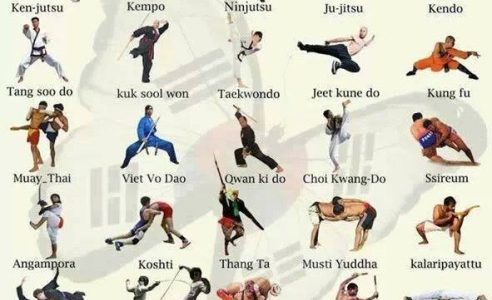Checking Out The Differences Between Traditional Martial Arts And Contemporary Combat Sports
Checking Out The Differences Between Traditional Martial Arts And Contemporary Combat Sports
Blog Article
kali martial arts -Sherman Johnson
When you think about martial arts, do you lean a lot more toward the conventional methods or the modern-day combat sporting activities? Each course offers unique benefits and experiences, shaped by their philosophies and training methods. https://www.menshealth.com/fitness/a38799592/krav-maga-self-defense-training-30-days-laurie-shaw/ and self-control, while modern-day fight sports focus on competitors and performance. Comprehending these distinctions can assist you in choosing the best strategy for your journey. But just how do these distinctions manifest in training and philosophy?
The Philosophy and History Behind Traditional Martial arts
While lots of people link martial arts with physical fight, the ideology and background behind conventional martial arts run much deeper. You'll discover that these self-controls emphasize personal development, self-control, and regard.
Stemming from old practices, typical martial arts were frequently established for Self-Defense and spiritual advancement. They personify principles such as balance, harmony, and self-control, directing practitioners beyond mere combating skills.
As you train, you'll not only discover techniques but also acquire insights into the culture and worths that formed these arts. The routines and practices, commonly given with generations, promote a sense of community and belonging.
The Affordable Nature of Modern Fight Sports
Modern combat sports have changed the landscape of martial arts right into a very competitive field, where athletes challenge in a test of skill, strategy, and endurance.
martial arts uniforms 'll discover that competitions are usually organized with rigorous policies and guidelines, making sure justice and security. These occasions bring in large audiences, fueling the enjoyment and strength of competitions.
Professional athletes train rigorously, not just for physical expertise yet likewise for psychological durability, knowing that every detail counts in the ring. The adrenaline thrill during competitions is apparent, as competitors push their restrictions to claim triumph.
Fans value the athleticism and virtuosity entailed, making modern-day combat sporting activities a thrilling phenomenon that remains to evolve and captivate fanatics all over the world.
Training Methods and Techniques: A Comparative Evaluation
The competitive ambience of modern battle sports needs innovative training approaches that differ significantly from traditional martial arts.
In modern training, you'll concentrate on certain strategies, competing, and conditioning, often making use of drills that simulate genuine battle situations. You'll see an emphasis on measurable efficiency and frequent competitors to assess your abilities.
In contrast, typical martial arts prioritize forms, katas, and philosophical teachings, typically emphasizing discipline and regard over competitors.
Training is generally less intense and may include repetitive technique as opposed to real-time sparring.
While both techniques build skill and health and fitness, modern fight sports give an extra dynamic and versatile training environment, preparing you for prompt difficulties in the ring or cage.
Select the path that aligns with your goals and passions.
Conclusion
In choosing in between standard martial arts and modern battle sports, it truly boils down to what you value most. If you're seeking personal growth, technique, and a sense of neighborhood, typical arts could be your finest fit. But if you grow on competition and real-time challenges, modern-day combat sporting activities could be the means to go. Eventually, both paths supply special advantages, so it's everything about aligning your training with your individual goals and rate of interests.
